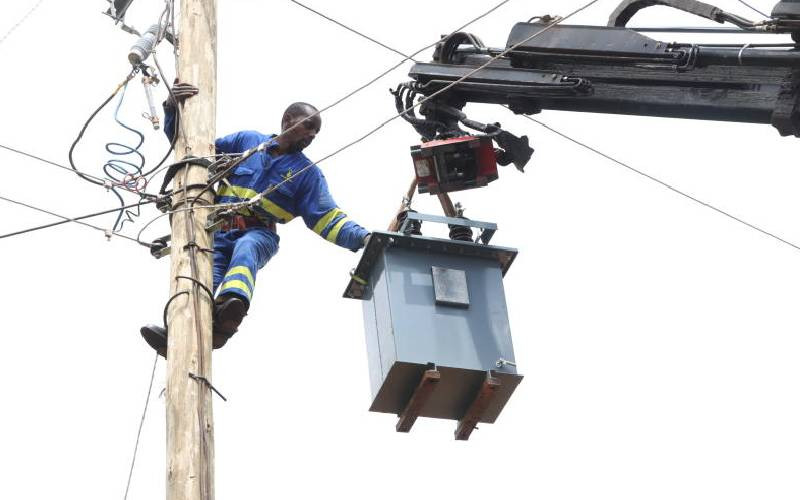Kenyans can breathe a sigh of relief that Jubilee broke its 2013 promise to increase the country’s installed electricity generating capacity. The Government’s plan was to up capacity by 5,000MW in four years, as it grappled with increased power outages and costs.
In the words of Energy and Petroleum Cabinet Secretary Charles Keter, the country does not have effective demand for such a high volume of power. Had the promise been kept, it would have meant already over-burdened consumers would be forced to pay for idle capacity.
In hindsight — which is a perfect science — the promise was always a bit over the top, considering the huge investment required to fund such an ambitious project, and the lengthy negotiations that take place before such loans are signed and disbursed.
Anticipated demand
The anticipated demand for electricity was expected to come from the establishment of power-intensive industries in the counties following the introduction of devolution.
That no such industries have materialised so far in any of the 47 counties despite many of them holding expensive investment conferences is a story for another day.
What is of immediate concern are the issues that stalk the entire power sector that the Government would do well to consider as it gears up for elections.
The sentiments expressed by the country’s largest power producer should not be swept under the carpet. KenGen expressed fears that having Kenya Power as its only customer could pose major risks in the future.
In KenGen’s view, these risks would be minimised if the country broke Kenya Power’s monopoly by licensing other firms in distribution and retailing of electricity.
It is noteworthy that other players in and outside the sector share KenGen’s sentiments. They have sponsored a bill, which is making its lethargic way through Parliament. Equally noteworthy is the fact that a similar bill had cleared all the hurdles in Parliament and Senate, but failed to get assent from the President.
Although the reasons for this failure are not clear, the hope is that this time round, the bill will be shepherded through the legislative process and will eventually become law.
Nevertheless, as welcome as this law, some caution is in order.
Revelations that some prospective customers are paying through their noses to get connected to power without going through the right procedures is a demonstration of the pent-up demand.
This raises the possibility that new entrants into the sector might disrupt it in a manner that might put into question the existence of Kenya Power.
Those doubting this need only look back to the days when Kenya Posts and Telecommunication (KPTC) was a colossus in the country. The break up of its monopoly sounded the death knell for KPTC, although it saw the emergence of telecommunication giants like Safaricom.
Stay informed. Subscribe to our newsletter
Economic landscape
The downsides of KPTC’s exit included the loss of thousands of jobs and a ballooning of national debt when the Treasury was forced to assume the company’s financial obligations.
The fate that befell KPTC could easily be repeated at Kenya Power if key sector players hide their heads in the sand and imagine it cannot happen.
One way of taking proactive steps to ensure a smooth sharing of functions and customers in the wake of the sector’s liberalisation is to give Kenya Power time to re-engineer its processes and re-train its staff so that they offer customers first-class service.
This will minimise disruptions of its income streams when new players come into the sector.
On its part, KenGen needs to step up its power generation to allow Kenya Power to shut off the thermal plants that are projected to produce almost 25 per cent of the country’s power. This will translate into lower and consistent power supply and pocket-friendly costs even in times of drought.
[email protected]
 The Standard Group Plc is a
multi-media organization with investments in media platforms spanning newspaper
print operations, television, radio broadcasting, digital and online services. The
Standard Group is recognized as a leading multi-media house in Kenya with a key
influence in matters of national and international interest.
The Standard Group Plc is a
multi-media organization with investments in media platforms spanning newspaper
print operations, television, radio broadcasting, digital and online services. The
Standard Group is recognized as a leading multi-media house in Kenya with a key
influence in matters of national and international interest.
 The Standard Group Plc is a
multi-media organization with investments in media platforms spanning newspaper
print operations, television, radio broadcasting, digital and online services. The
Standard Group is recognized as a leading multi-media house in Kenya with a key
influence in matters of national and international interest.
The Standard Group Plc is a
multi-media organization with investments in media platforms spanning newspaper
print operations, television, radio broadcasting, digital and online services. The
Standard Group is recognized as a leading multi-media house in Kenya with a key
influence in matters of national and international interest.









